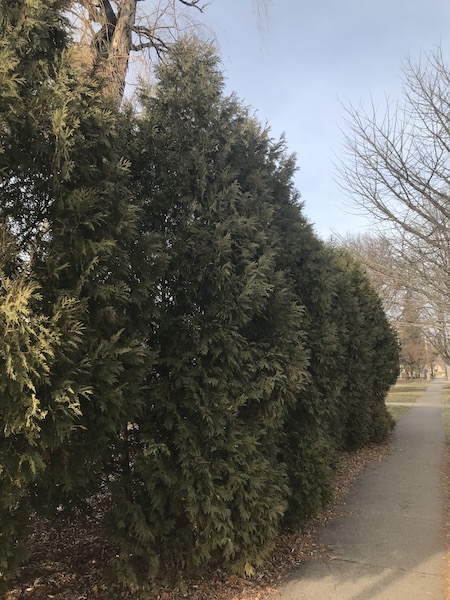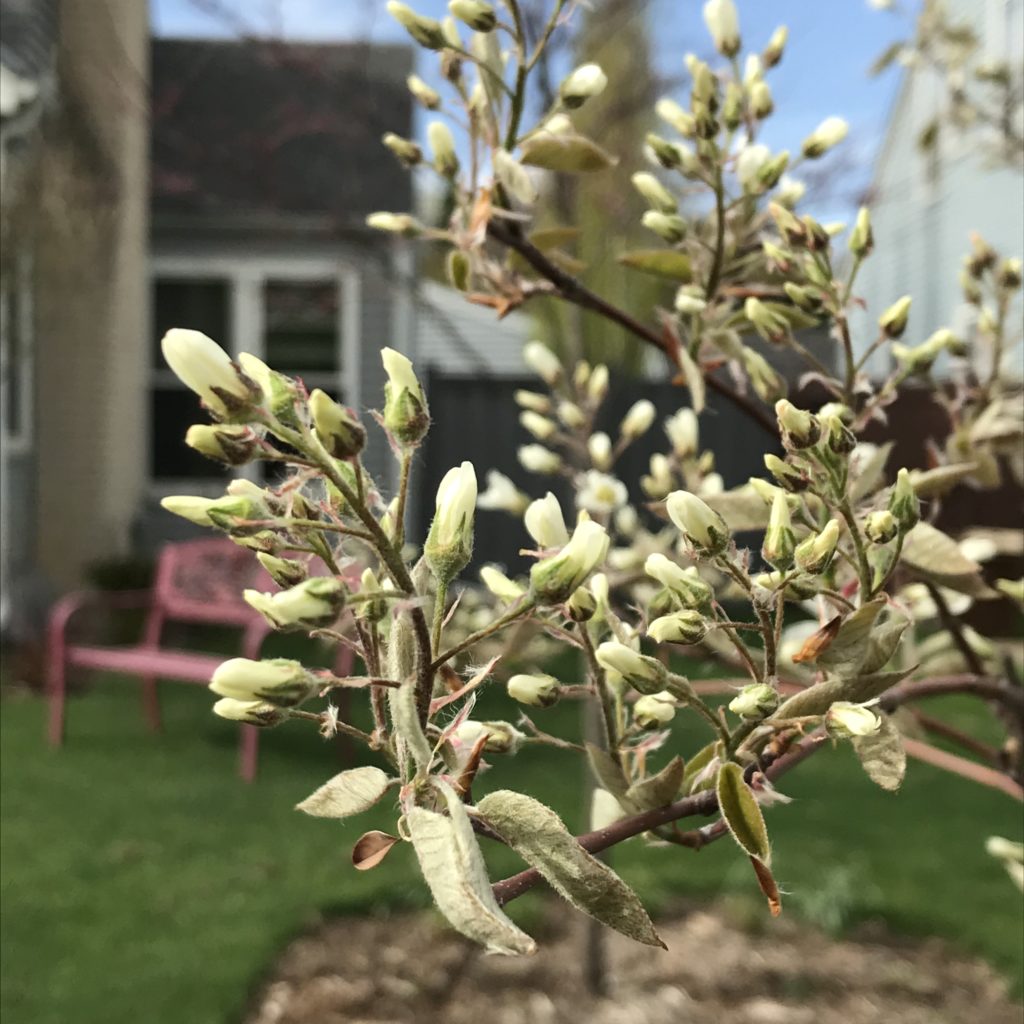The most recent Grow it, Minnesota podcast is all about creating a landscape for wildlife, especially birds. Mark Moeller, a certified arborist from Davey Tree Expert Co., was my guest and he suggested about a dozen of the best trees for birds in the North. Here are his top picks:

Arborvitae: If you want lots of birds in your yard, you need to meet their basic needs, including food, water, shelter and places to nest. Arborvitae meet those last two needs perfectly. If you’ve ever had a mature arborvitae on your property, you know it becomes a bird condo in winter! Eastern arborvitae (Thuja occidentalis) is an evergreen that can grow up to 40 feet high and 15 feet wide, but there are many smaller arborvitae cultivars that fit into urban landscapes beautifully. I have an ‘Emerald Beauty’ arborvitae (Thuja occidentalis x ‘Smaraged) in my backyard, and even though it will never get taller than 10 feet, it had a pair of (I think) chipping sparrows nesting in it last summer. Arborvitae provide lots of cover for birds, and are great placed within quick flying distance of feeders, according to Mark. If you have room on your property, another excellent tree for birds is the eastern red cedar (Juniperus virginiana).

Crabapples: Walking around my neighborhood, I see many large, older crabapple trees absolutely laden with red fruit. Not only are they beautiful in the frosty days of early winter, but crabapples are one of the best trees for birds in the North. For birds that overwinter in Minnesota, those berries are survival food. There are dozens of crabapple varieties available (be sure to get one that has fruit!) but Mark really likes snow crabapples (Malus ‘Snowdrift’), which grow 15 to 20 feet tall and wide and have pink flowers. He says, “they have a great branching structure and are followed by orange-red fruits for wildlife. These fruits are ‘persistent’ and therefore typically stay on the tree throughout the beginning of winter.” Another good variety with resistance to apple scab is ‘Prairie Fire’.
Oaks: Oaks are one of the best trees for pollinators and wildlife generally. They provide food and shelter to more than 300 species of pollinators. Of course, squirrels also love oaks and their acorns (you can decide how you feel about that). Like many arborists, Mark is a fan of the northern pin oak for Minnesota.

Serviceberries. This is another favorite tree of arborists, nursery owners and other plant people. The serviceberry (Amelanchier) is a native tree that comes in either multi-stem or single stem options. It was recommended by the St. Paul city forestry office as a good tree for urban yards because it does not get too large (topping out at 15 to 25 feet), has dainty white flowers in spring and berries that feed birds in summer and beyond (if they last that long.) This is just about the perfect urban tree.
Hackberry. Mark also put in a pitch for hackberry as a great tree for wildlife, especially if you want to attract cedar waxwings. Hackberry (Celtis occidentalis) is a native tree in southern and central Minnesota. It has the tall grandeur of an elm and was often planted on boulevards after elms were killed by Dutch elm disease. The tree is super tough and can handle drought, dampness, salt-spray and ice. One of its best attributes is its craggy bark, which provides winter interest in the landscape.

Other Options for Food: In winter, Mark recommends that people include some feeders on their property, both seed and suet. As he noted, wildlife provides a lot of entertainment, especially for families with kids at home doing distance learning! So put your bird shrubs and feeders in a location where you can see them from indoors. Having birds in your yard is also a great opportunity to teach your children about plants and birds. His other recommendations for best trees for birds were largish trees/shrubs with fruit, including chokecherry, elderberry, riverbank grape (be careful with that one: it can get invasive) and red mullberry.
I do love landscapes! I personally experience weeping willow tree roots that also attract birds because it is great for nest-building.
thank you so much. i’m prepping a bird gardening class and loved reading this.
I was surprised to read the positive review on Arborvitae. In my native country Germany it is popular but not for attracting any life. For birds here it is too dense. Caterpillars can’t eat its leaves and there are no flowers to attract bees and flies. Nature conservationists here keep encouraging to avoid it. I wonder what birds are habitual in using Arborvitae in its native habitat.